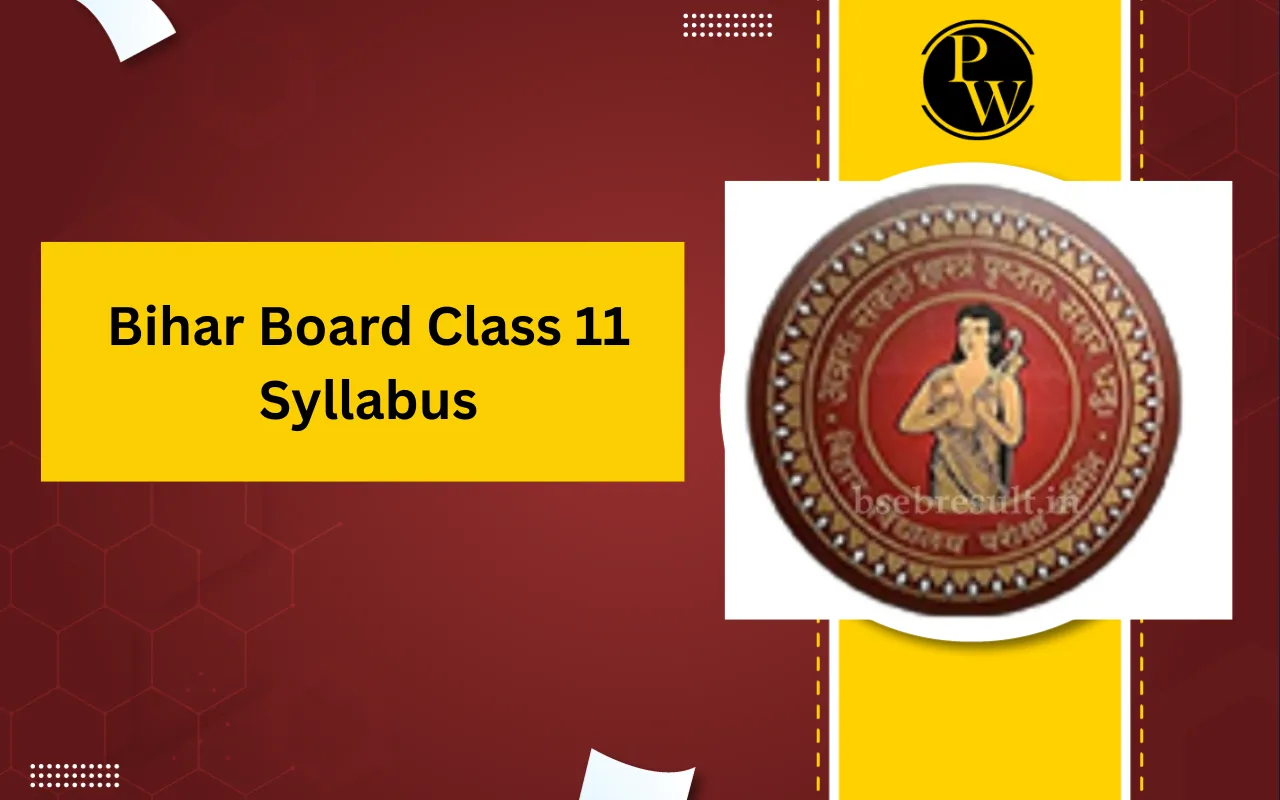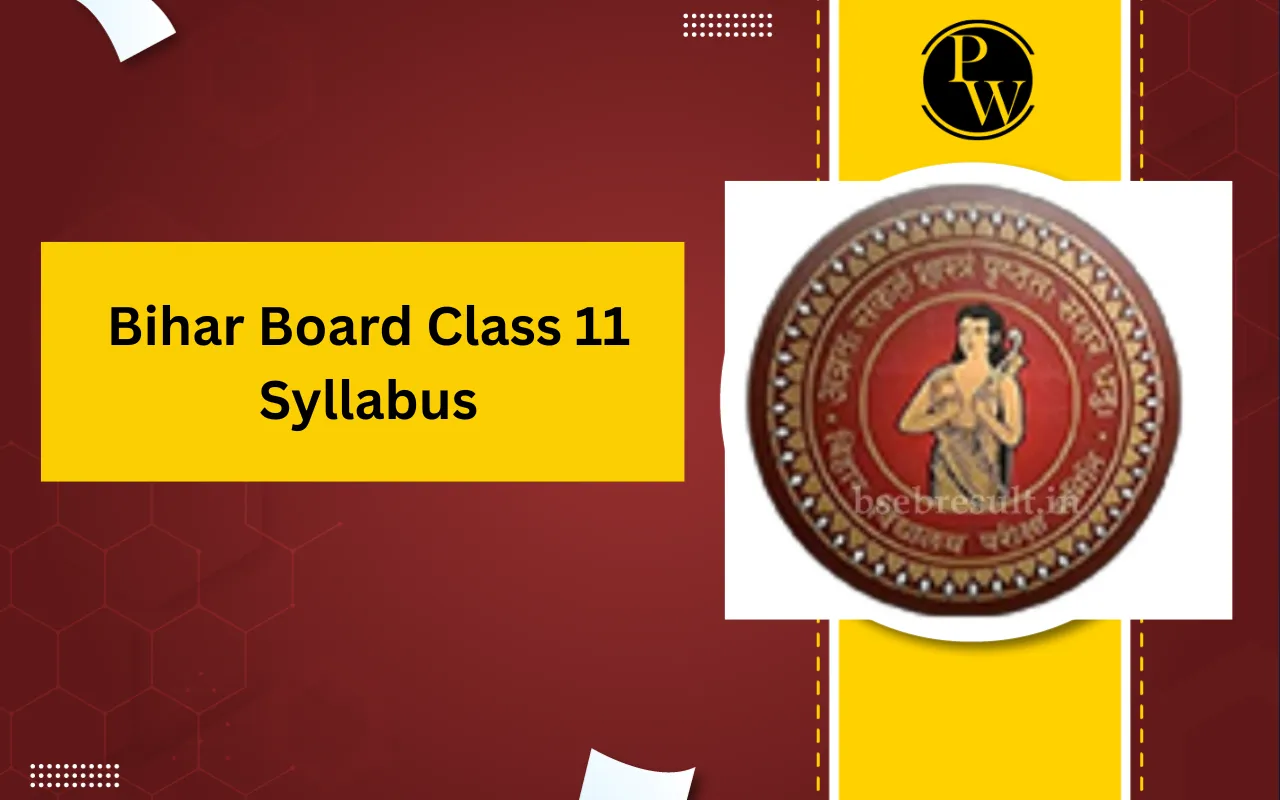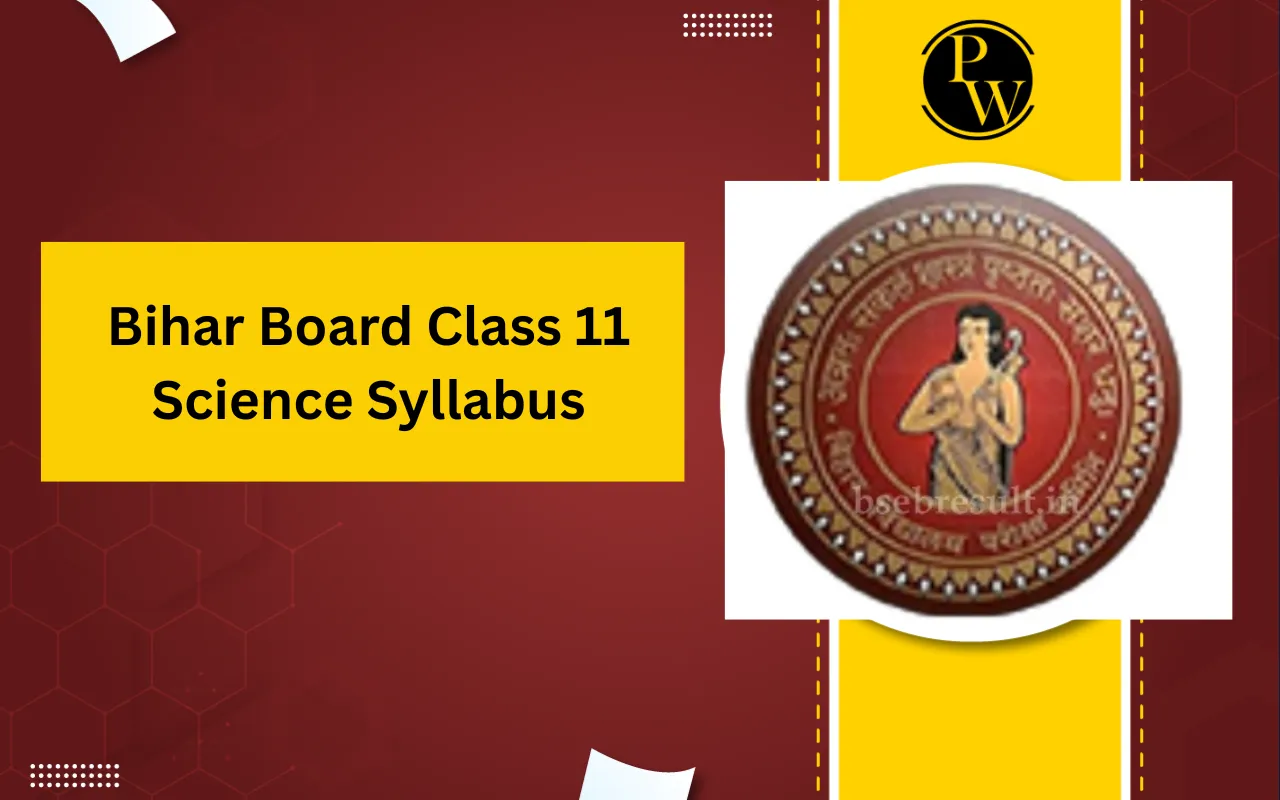

Bihar Board Class 11 Science Syllabus 2025-26 is the most important guide for students appearing in the academic session 2025-26. It is released by the Bihar School Examination Board (BSEB) on its official website. It contains details related to all the chapters, topics, and marks for the Class 11 annual examination.
Understanding the complete BSEB Class 11 Syllabus 2025-26 is the most important step for effective exam preparation. Syllabus helps students manage their time, focus on high-weightage topics, and create a targeted study plan.
Bihar Board 11th Science Syllabus 2025-26 Overview
The Bihar Board Class 11 Syllabus 2025 aims to focus on providing both theoretical and practical knowledge. Here are the highlights of the Bihar Board Class 11 syllabus:
| Bihar Board 11th Science latest Syllabus 2025-26 | |
| Particulars | Details |
| Board Name | Bihar School Examination Board |
| Abbreviation | BSEB |
| Class | 11th |
| Mode of Examination | Offline Mode (Pen and Paper) |
| Subjects | History, Hindi, Geography, Maths, Biology, English, Physics, Political Science, Chemistry |
| Total Marks | 100 |
| Time duration | 3 hours |
| Language | Hindi and English |
| Official Website | biharboardonline.com |
BSEB Class 11 Science Syllabus 2025-26 PDF Download Link
The BSEB Class 11 Science Syllabus PDF is the most reliable document for preparation. Students are strongly advised to download and print the syllabus copy to keep track of their progress. Accessing the curriculum directly from the board’s portal ensures you have the correct information for the 2025-26 examination. Students can download the official BSEB Class 11 Science Syllabus from the table below:
| BSEB Class 11 Science Syllabus 2025-26 PDF Download Link | |
| Subjects | Download Links |
| Physics | Download Here |
| Chemistry | Download Here |
| Biology | Download Here |
BSEB Class 11 Science Exam Syllabus 2025-26
BSEB Class 11 science subject-wise syllabus provides the unit-wise breakdown of topics and their respective weightage. It is important for focused preparation. The exam pattern, including the distribution of marks between theory and practical components, is crucial for strategising preparation. Below is a detailed structure and marking scheme for key science stream subjects in the Class 11 Science Syllabus BSEB 2025-26:
BSEB Class 11 Physics Syllabus
In the Physics subject of the Bihar Board Class 11 Science Syllabus 2025-26, the theory paper is for 70 marks, while the practical paper carries 30 marks. Units like Kinematics and Oscillations, and Waves have significant weightage.
| BSEB Class 11 Physics Syllabus | ||
| Units | Topics Included | Weightage of Marks |
| 1 | Physical World and Measurement | 3 |
| 2 | Kinematics | 10 |
| 3 | Laws of Motion | 10 |
| 4 | Work, Energy and Power | 6 |
| 7 | Properties of Bulk Matter | 8 |
| 10 | Oscillations and Waves | 10 |
| Theory Paper Total Marks | 70 | |
| Practicals | 30 | |
| Grand Total | 100 | |
BSEB Class 11 Chemistry Syllabus
In the Chemistry subject of the Bihar Board Class 11 Science Syllabus 2025-26, like Physics and Biology, the Chemistry paper is divided into 70 marks for theory and 30 marks for practicals. Students are required to pay special attention to chapters on Organic Chemistry and Hydrocarbons.
| BSEB Class 11 Chemistry Syllabus | ||
| Units | Topics Included | Weightage of Marks |
| 1 | Some Basic Concepts of Chemistry | 3 |
| 2 | Structure of Atom | 5 |
| 5 | Chemical Bonding and Molecular Structure | 5 |
| 13 | Organic Chemistry- Some Basic Principles and Techniques | 7 |
| 14 | Hydrocarbons: Classification and Mechanisms | 8 |
| 15 | Environmental Chemistry | 3 |
| Theory Paper Total Marks | 70 | |
| Practicals | 30 | |
| Grand Total | 100 | |
BSEB Class 11 Biology Syllabus
In the Biology subject of the Bihar Board Class 11 Science Syllabus 2025-26, the total marks are 100, split into 70 marks for the theory exam and 30 marks for the practical examination. Plant and Human Physiology are the highest-scoring units in this syllabus.
| BSEB Class 11 Biology Syllabus | ||
| Units | Topics Included | Weightage of Marks |
| 1 | Diversity in the Living World | 5 |
| 2 | Structural Organisation | 10 |
| 3 | Cell: Structure and Function | 15 |
| 4 | Plant Physiology | 16 |
| 5 | Human Physiology | 16 |
| 6 | Organism and Environment | 10 |
| Theory Paper Total Marks | 70 | |
| Practicals | 30 | |
| Grand Total | 100 | |
BSEB Class 11 Science Syllabus 2025 Preparation Tips
The Bihar Board Class 11 Science Syllabus 2025-26 is a significant tool for planning Class 11 exam preparation. Using the syllabus effectively, students can improve their performance in the examination. Here are essential tips for using the BSEB Class 11 Science Exam Syllabus 2025 to prepare:
-
Analyze Weightage: Study the mark distribution tables closely. Units like Laws of Motion in Physics and Plant/Human Physiology in Biology are high-priority topics that require more study time.
-
Create a Study Schedule: Divide the chapters into monthly or weekly targets based on the complexity and weightage of each unit.
-
Make Short Notes: While studying, create concise notes for formulas and key concepts. These short notes are helpful for quick revision right before the exam.
-
Solve Practice Papers: Regularly practice questions from previous years' papers. This exercise improves time management and helps students understand the question patterns.
-
Clear Doubts: Students should not let their doubts pile up. They should ensure that they ask teachers or peers for help on challenging topics as soon as they arise.
Bihar Board Class 11 Syllabus 2025 Benefits
-
The Bihar Board has created the syllabus keeping in mind the competitive exams preparation. The syllabus includes topics which are generally included in competitive exams like JEE, NEET, and CUET to help students prepare for both board and competitive exams together.
-
It clearly divides the subjects under Commerce, Science, and Arts streams. This structured format helps students focus better on stream-specific exam preparation and career paths from Class 11 itself.
-
It follows the NCERT based textbooks which helps students in time management without juggling between books. Students can simply refer to NCERTs for their exam preparation.
-
Practical work is an important part of the curriculum in subjects like Physics, Chemistry, Biology, and Computer Science. It helps students understand concepts more effectively.
-
The updated syllabus allows students to perform various activities through tools like online resources, digital tools, and e-learning platforms. This helps students understand the concepts better and allows them to learn at their own speed, anytime and anywhere.
Bihar Board Class 11 Science Syllabus FAQs
Who releases the Bihar Board Class 11 Science Syllabus 2025-26?
Which subjects are included in the Bihar Board Class 11 Science stream?
What is the total marks distribution for BSEB Class 11 Science subjects?
Where can students download the Bihar Board Class 11 Science Syllabus PDF?
Which topics have high weightage in the Bihar Board Class 11 Science Syllabus 2025-26?












